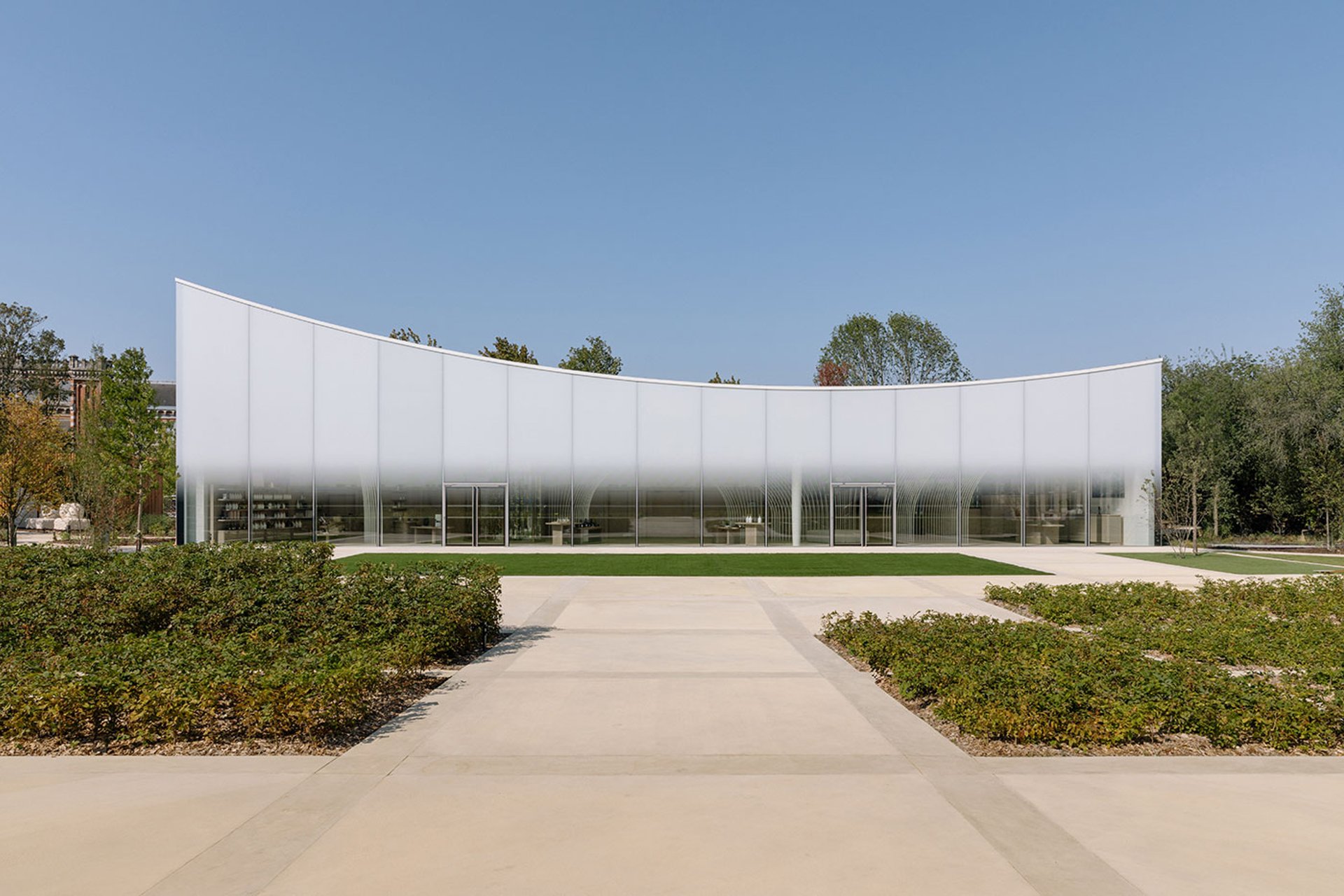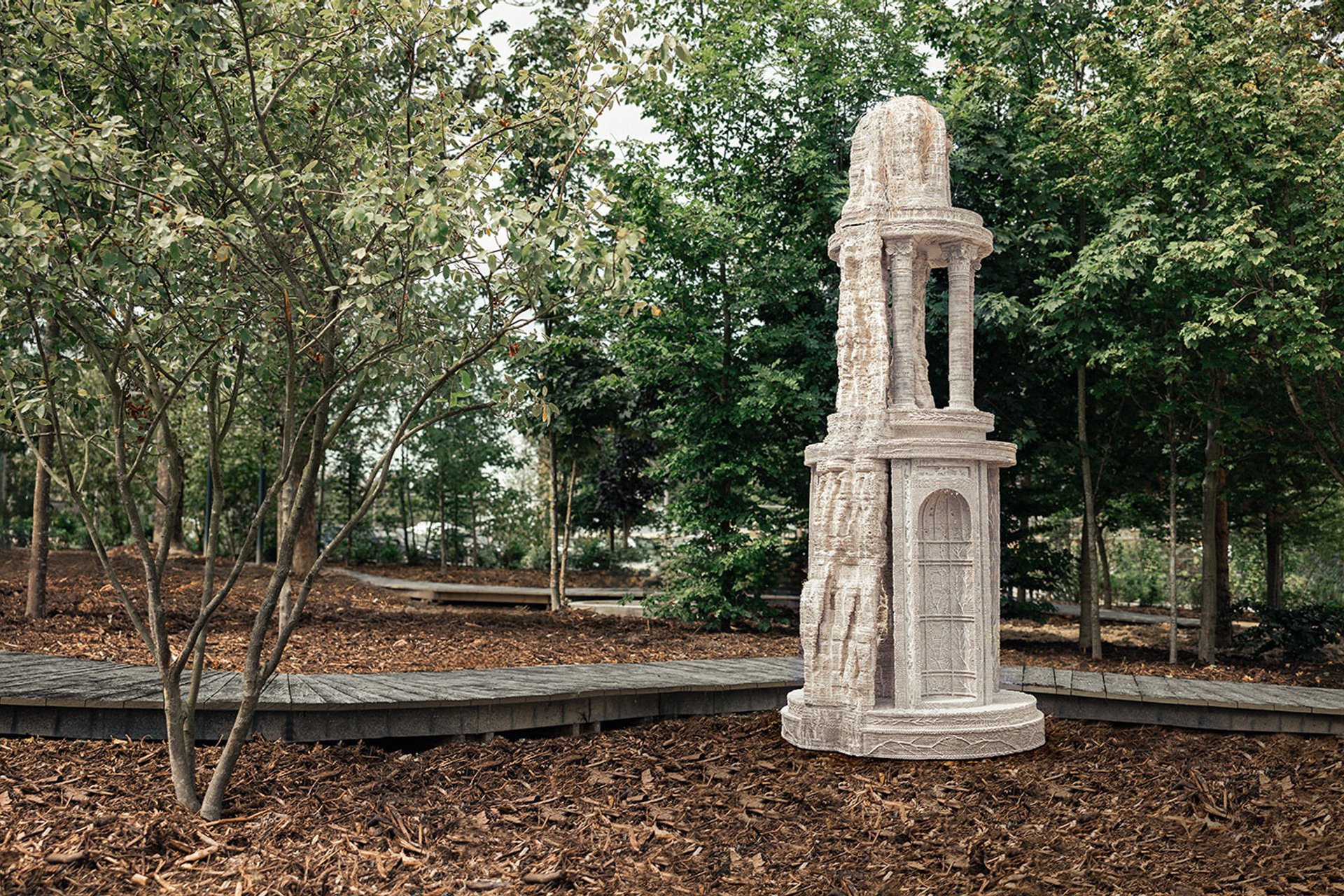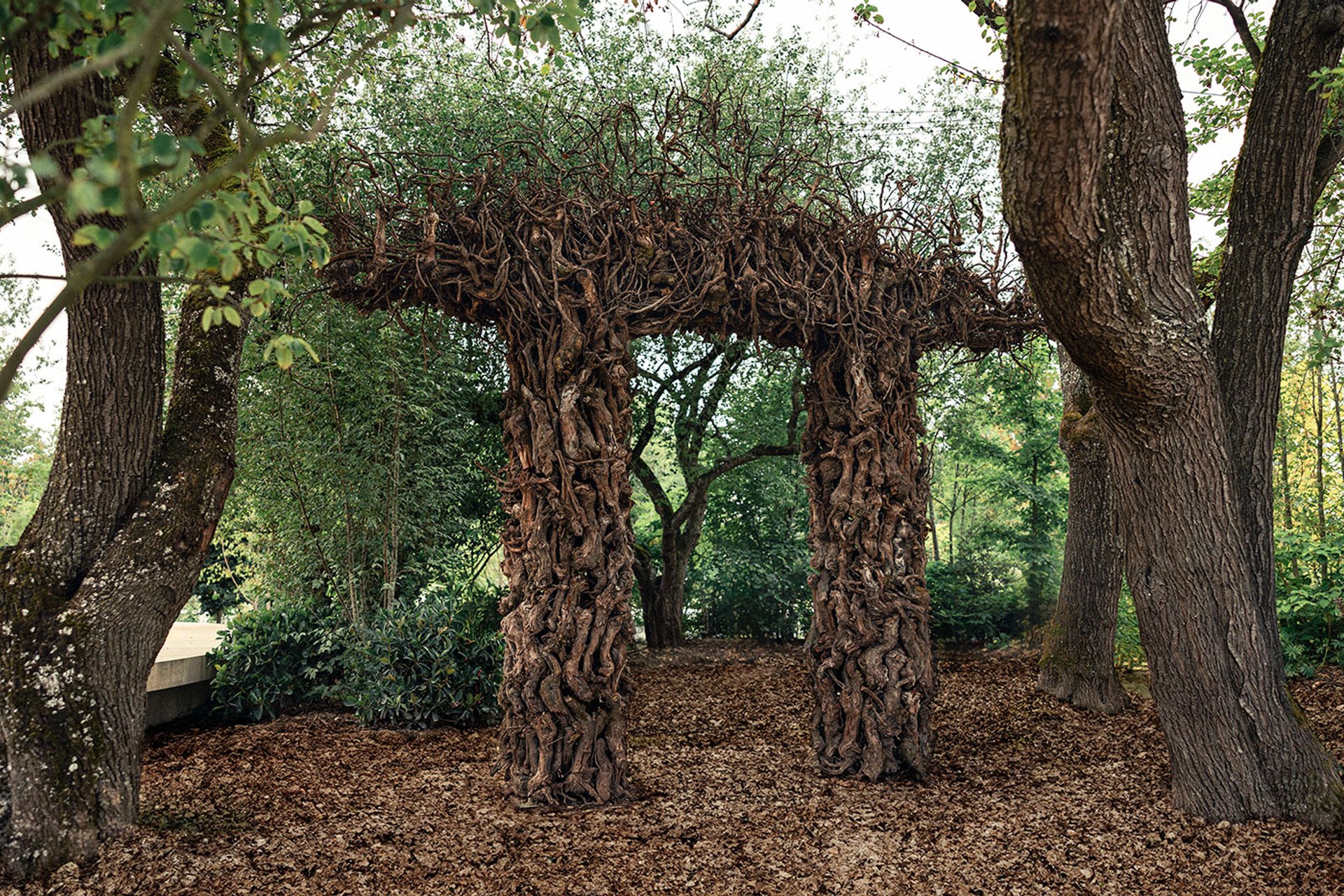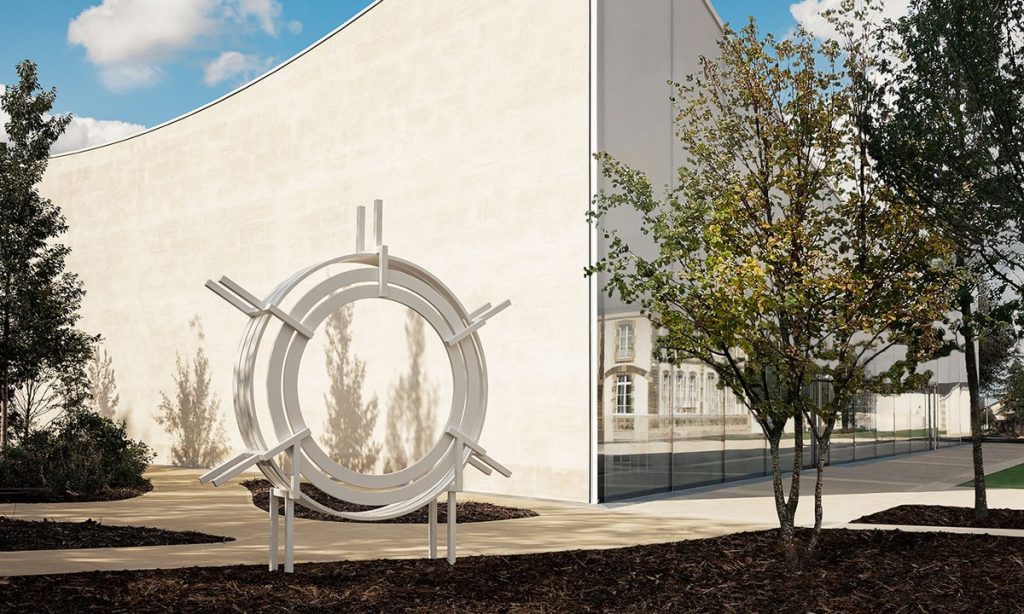Champagne is the second-most visited wine region of France, with Reims, the hub of the region’s biggest champagne brands, hosting 7.5 million visitors in 2023—a 50% increase compared to 2022—with figures expected to surpass this number for 2024, according to the region’s official trade body, Comité Champagne.
To attract its share of this footfall, the appellation’s oldest champagne house, Maison Ruinart, established in 1729, recently unveiled a new visitors’ pavilion, designed by the Japanese architect Sou Fujimoto. Fujimoto is an architect who can “mix together hospitality, a boutique, all in a luxury environment and in a warm environment,” according to Frédéric Dufour, Ruinart’s president and chief executive.

The Nicolas Ruinart Pavilion, a new visitor centre for the Ruinart champagne house, in Reims, designed by Sou Fujimoto © Raul Cabrera. Courtesy: Ruinart
The Nicolas Ruinart Pavilion, named after the maison’s founder, is approached via a paved path, the Chemin de Crayères, named after the Unesco-protected crayères, or chalk-walled cellars, dug under the premises in the Middle Ages, when they were used as quarries for chalk extraction. The new complex mirrors the winery’s original 18th-century chateau and is complimented by elegant interiors designed by Gwenaël Nicolas, and the landscape artist Christophe Gautrand.
When it came to the overarching concept, Fujimoto says, “I wanted to think about the identity of champagne”. His inspiration came from a “bubble”, rendered into a “huge bubble floating above a glass.” The architect played with this effervescent scale by transposing a small bubble into a monumental limestone structure. He also incorporated “lightness and translucency, transparency, floating feelings” by inverting the glass panels and topping the building with the opaque curved rooftop. This was intended to be a modern contrast to the traditional design of the maison across the square, but also to block the daylight and heat, reducing the need to use artificial cooling and consume energy.

The historic buildings, and sculpture commissions, at Maison Ruinart, seen from inside the new visitor pavilion © Raul Cabrera. Courtesy: Ruinart
This sustainability angle is significant, because, alongside this new pavilion, Ruinart also revealed several site-specific commissions of contemporary art in its 7,000 sq. m of biodiverse woodland. These new projects demonstrate how Ruinart’s evolving relationship with art gravitates towards pieces that address questions about climate change and the natural world.
For instance, Xylemia (2024) by Thijs Biersteker, is a series of sinuous cables made from repurposed plastic, twirling upwards alongside trees that include sensors to measure sap flow and thus monitor the trees’ health and translate the data into light signals. Eva Jospin’s Capriccio (2024) is a plaster homage to the rococo architecture of the original house, and is designed to be consumed by vegetation over time.

Eva Jospin, Capriccio (2024), a site-specific piece made for the Jardin d’Artistes, Les Crayères de Ruinart, Reims © Mathieu Bonnevie. Courtesy: Ruinart
The Rock (2024), by the German artist NILS-UDO, is a large marble egg nestled in a limestone cave made from the same local limestone materials as the rest of the property. Cerf Contrôle (2024) by the Cameroonian artist Pascale Marthine Tayou, is a tree sprouting glass fruits from its bronze branches.
The art world might think it knows Ruinart as the familiar hosts of myriad events on the cultural calendar, where it has drunk the maison‘s cuvees at art fairs, biennales and show openings. However, Maison Ruinart’s relationship with contemporary art goes deeper than that of many other luxury brands.
While it is now common for brands to engage with artists to distinguish themselves and connect with luxury clients, Ruinart was the first to commission an artist, Alphonse Mucha, to work on drawings and advertisements for its brand in 1896, anticipating the evolving sentiments of modern luxury audiences. As Dufour says: “we don’t do art for art. We do art because we believe artists are the best conveyors of what we believe in; our values, our history.” Collaborating with artists allows them to “bring the emotion and the innovation that we need”.
Ruinart was the first to commission an artist, Alphonse Mucha, to work on drawings and advertisements for its brand
For Dufour, such collaborations blend science with aesthetics, and signal something more permanent than transient luxury experiences. “The idea is they all bring a different message about the environment … a different evocation of nature and about the history of Ruinart.” This decades-long legacy has evolved into a commitment to art and design that address the challenges of climate change, in parallel with the latter’s impact on winemaking.

Cornelia Konrads, The Arch (2024), a site-specific piece made for the Jardin d’Artistes, Les Crayères de Ruinart, using vines from the maison’s vineyards © Mathieu Bonnevie. Courtesy: Ruinart
In a mirroring of making, the maison’s cellar master, Frédéric Panaïotis, created a cuvee in response to yields affected by climate change—the Blanc Singulier cuvée—to accommodate the “the rhythm of years marked by an atypical climate”. Winemakers must now consider potential unknowns such as new flavour characteristics, which can occur in grapes due to temperature change, and accelerated ripening, because of global warming.
For Ruinart, all these new initiatives show how art and design are essential tools for addressing pressing questions around man’s impact on nature and the environment. Art is central not only to Ruinart’s identity but also to its sustainability efforts and problem-solving around environmental change.








